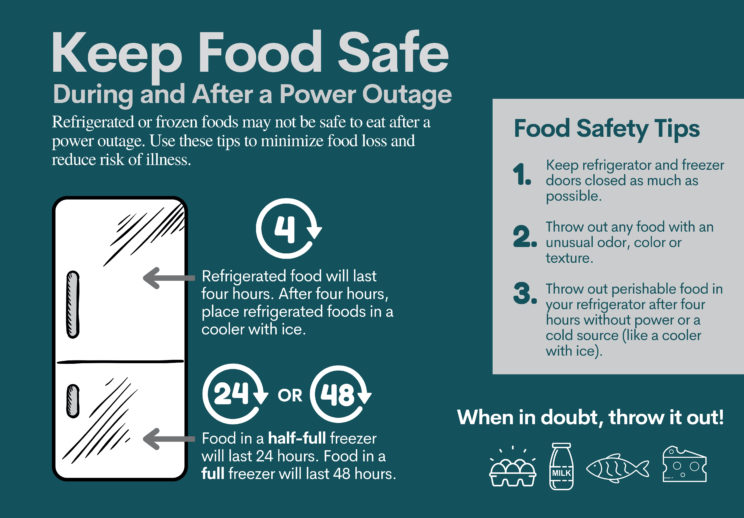Severe winds, lightning, and even squirrels can temporarily cause the power to go out. We understand power outages of any length can be frustrating, especially when your fridge is stocked with perishable foods. Extended power outages are rare, but when they occur, it’s important to understand food safety measures to take to avoid illness.
Here are a few food safety tips to keep in mind before, during, and after a power outage.
Before an outage
A good rule of thumb is to keep an emergency supply kit on hand. Be sure to include nonperishable food items like bottled water, powdered milk, canned goods, cereal, and protein bars in your emergency kit.
If you have advance warning that an outage is possible, fill a cooler with ice––just in case the outage spans several hours. Having a cooler ready to go can buy extra time for your refrigerated, perishable items.
During an outage
If an outage occurs, do not open the refrigerator or freezer unless absolutely necessary. An unopened refrigerator will keep food cold for about four hours. A half-full freezer will keep food frozen for about 24 hours and a full freezer for about 48 hours. If it looks like the power outage will last longer than four hours, move your important perishable items to an ice-filled cooler.
After an outage
If refrigerated foods have been exposed to temperatures higher than 40 degrees for more than two hours, the American Red Cross recommends discarding the items. If any foods have an unusual color, odor, or texture, they should be thrown away.

While most perishable foods should be thrown out after an extended outage, there are a few items that are safe to consume after a two-hour exposure to 40+ degrees:
• hard cheeses that are properly wrapped
• butter or margarine that is properly wrapped
• taco, barbecue, and soy sauces
• peanut butter, jelly, mustard, ketchup, and relish
The best way to avoid illness from spoiled food during or after an outage is to follow the four-hour rule of thumb. After an outage, always smell and inspect foods before consuming, and remember: when in doubt, throw it out.
To learn more about food safety after an emergency, visit www.ready.gov/food.


